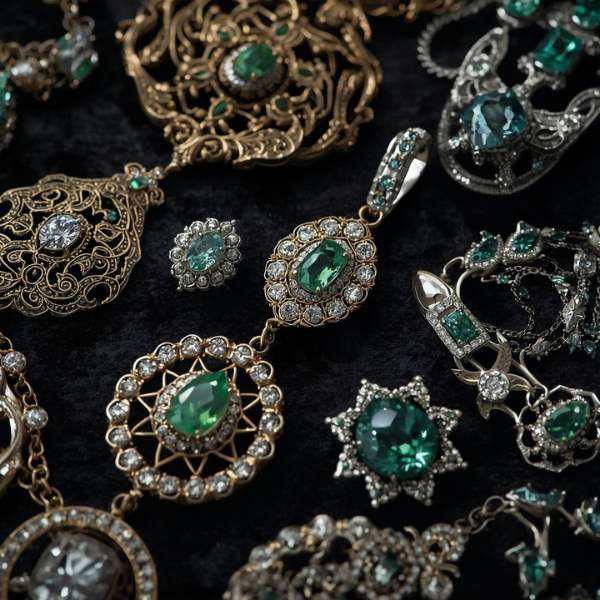
The Disguised Diamond Robbers of London
When two men walked into Graff Diamonds on New Bond Street, London, on 6 August 2009, they changed how the world thought about jewelry heists forever. With professional prosthetic disguises, razor-sharp planning, and bold execution, they stole 43 pieces of jewelry worth nearly £40 million (about US$65 million) in a raid that stunned both London and the criminal underworld.
They didn’t hide their faces from CCTV — because they weren’t the faces you’d expect.
This is the story behind that audacious heist, its planning, aftermath, investigation, and the lessons it left us.
📌 Setting the Scene: Why This Heist Stands Out
- At the time, the Graff robbery was considered the largest gem heist in Britain, and one of the most daring jewelry robberies ever.
- The robbers used professionally applied disguises and prosthetics, convincing enough that even close acquaintances might not recognize them.
- The loot included rings, bracelets, necklaces, and watches, including a necklace worth more than £3.5 million alone.
- To this day, none of the stolen jewelry has been recovered in its original form.
- The case remains highly instructive for criminologists, security experts, and law enforcement worldwide.
This heist combined disguise, boldness, and speed — traits that echo in stories of criminal legends.
🧰 Planning & Execution: How They Pulled It Off
The Disguise: Prosthetics and Makeup
One of the most remarkable aspects of the heist was the care invested in disguises.
- The two main robbers engaged a professional makeup artist who believed they were preparing for a music video assignment.
- Over four hours, the artist altered their skin tones, facial features, and appearance using latex prosthetics, wigs, and makeup.
- Reportedly, one of the robbers quipped, “My own mother wouldn’t recognise me now,” highlighting the stunning effectiveness of the disguises.
- This same makeup studio had previously worked (unknowingly) for criminals involved in the Securitas depot raid in 2006.
Because of the disguises, the robbers did not attempt to cover their faces from CCTV cameras — they were already assumed to look entirely different.
The Robbery Itself
Here’s how the robbery unfolded:
- Arrival: At 4:40 pm, two sharply dressed men arrived by taxi at Graff Diamonds on New Bond Street.
- Inside the store: They produced firearms and threatened staff. One staff member, Petra Ehnar, was forced to empty display cabinets.
- Hostage: Ehnar was held at gunpoint and escorted into the street with the robbers, forced to comply.
- Shot fired: A gunshot was fired into the air to create chaos and deter interference.
- Loot: They collected 43 items, including high-value pieces.
- Escape: They escaped via a blue BMW, abandoned it on Dover Street, then switched to a silver Mercedes. Finally, they switched vehicles in Farm Street.
- Missing traces: Their trail effectively vanished.
Detectives noted that the robbers seemed to know exactly which pieces to target, suggesting inside knowledge or prior recon.
Mistakes & Clues Left Behind
No heist is perfect, and the Graff raid left behind clues that ultimately helped law enforcement:
- In the haste of the escape, the robbers left a pay-as-you-go mobile phone behind, wedged between the driver's seat and the handbrake.
- That phone contained numbers and metadata investigators used to trace links to suspects.
- Ten suspects were arrested in the months following the robbery, and several trials ensued.
Interestingly, the gang used blocking vehicles, false number plates, and coordinated movement to delay police response — all signs of serious planning.
🧾 Losses & Aftermath
Valuation & Insurance
- The jewelry haul was valued at ~£40 million (insurably).
- Some sources report the insurance claim value was around £26 million, with the insurance consortium liable for less.
- Graff’s internal loss (from their side) was estimated lower, partly due to insurance coverage.
Recovery Efforts
- As of March 2011, no substantial recovery of the jewelry in its original form had been made.
- Experts believe the stolen items were likely broken up, cut, recut, or redistributed to avoid traceability.
- Because diamonds and gemstones can be recut and re-certified, anonymity is more achievable.
Prosecutions & Sentences
In July 2010, a principal suspect, Aman Kassaye, was convicted of conspiracy to rob, kidnapping, and firearm offenses, receiving 23 years imprisonment.
Other accomplices received heavy sentences:
- Craig Calderwood: ~21 years
- Three others (Solomun Beyene, Clinton Mogg, Thomas Thomas): each ~16 years
Although multiple arrests and convictions occurred, none of the original jewelry has been publicly confirmed as recovered.
🔍 Investigation Insights & Criminological Interpretation
Modus Operandi & Casing
- The fact that proceeds were instantly targeted and the thieves knew which pieces to take suggests prior inside intelligence or surveilled knowledge of inventory.
- Using a professional makeup studio (by deceiving them about the purpose) demonstrates how criminal actors exploit legitimate trades and craftsmanship as tools in their crime.
- The use of multiple getaway vehicles, blocking tactics, and disguise indicates high-level planning similar to paramilitary operations.
- The gang apparently had alternate escape routes, and no visible panic or hesitation during execution — suggesting rehearsals and contingency planning.
Organizational Profile & Possible Gang Link
While the Graff robbery was never definitively tied to one gang, speculation points to the Pink Panthers, a network of Balkan jewel thieves known for daring heists, disguises, and mobility.
- The Pink Panthers are tied to multiple high-profile jewelry robberies across Europe, often employing theatrical disguise and rapid movement.
- Some analysts link the 2009 Graff robbery to them, because the robbers made no attempt to hide their faces (as if they already had changed them).
However, no public court document conclusively links Pink Panthers to this specific theft.
Challenges in Legal Recovery
- Once the gemstones are recut or remounted, they lose original inscriptions or identifiers.
- The cross-border movement of gems, involvement of intermediaries, and use of shell companies make tracing near impossible.
- Since the heist occurred in multiple stages and possibly left the country quickly, coordinating international law enforcement becomes complex.
🧩 Lessons Learned & Security Implications
This heist is not just a sensational story — it offers lessons for jewelers, security planners, and criminology scholars alike.
1. Disguises & Psychological Manipulation
Criminals may not just don masks — they may use prosthetics, altered appearances, and social engineering to obscure identity. Security systems relying solely on facial recognition or CCTV may be circumvented.
2. Insider Knowledge & Reconnaissance
Knowing which items to target (those that are high value, easier to liquidate, or already marked) suggests deep reconnaissance. Security audits should consider the risk of informants or insiders.
3. Layered Security & Redundancy
- Backup CCTV (from outside angles)
- Physical backup alarms
- “Silent alarm” systems invisible to intruders
- Geofencing and vibration sensors in showcases
Robbers often calibrate their speed with expectations of reaction time — slowing that down or creating confusion can hamper their success.
4. Rapid Forensic Traceability
- Laser inscription or micro-etching on gemstones
- Digital registries of key items
- Chain-of-custody certificate tracking
The more traceable each high-value piece is, the harder for thieves to anonymize it irreversibly.
5. International Coordination & Intelligence Sharing
The stolen gems are liable to move quickly across borders. Law enforcement must:
- Share intelligence across jurisdictions
- Monitor gem trade publications, auctions, and pawn dealers
- Use Interpol theft databases and alerts
6. Criminal Innovation & Adaptation
This case reminds us: criminals adapt. They use nonviolent deception, exploitation of legitimate services, and rapid mobility. Security planning must anticipate novel techniques, not just brute force attacks.
🧭 Legacy & Contemporary Relevance
Though the robbery occurred in 2009, its implications remain highly relevant:
- It is repeatedly cited in books, training programs, and documentaries as a paragon of disguise-based crime.
- The method of using prosthetics and deceiving legitimate service providers surfaced later in other high-profile robberies.
- Jewelers worldwide increased investment in covert security and metadata registries.
- For criminologists, it shows the intersection between performance, forgery, and violent crime — a valuable case for teaching.
From a symbolic vantage, the heist also represents theatrical criminal daring, where the spectacle is part of the crime. The robbers’ confidence to walk in, demand gems, and walk out with a hostage underscores the daring.
Though many gangs now operate more quietly, the 2009 Graff heist remains a reference point for both criminal audacity and security countermeasures.
✅ Conclusion
The 2009 Graff Diamonds robbery was no ordinary crime. It combined elaborate disguise, inside knowledge, and bold execution to pull off a £40 million jewelry heist in the heart of London — with none of the stolen items ever conclusively recovered.
For criminology, it provides a masterclass in innovation, social engineering, and the evolving nature of high-end crime. For security professionals, it underscores that appearance, deception, and time are potent tools for perpetrators.
If you like, I can now provide a timeline of the robbery, or a comparison with other major jewelry heists (e.g. Antwerp, Green Vault) to see parallels. Would you prefer I do that next?
📚 Sources & References
- 2009 Graff Diamonds robbery – Wikipedia
- Four robbers convicted over £40m Graff diamond heist – The Guardian
- Jury sees footage of ‘terrifying’ £40m heist – The Independent
- Graff (jewellers) – Wikipedia
- Pink Panthers – Wikipedia
- Tatler – The 6 biggest jewellery heists in history
- Atraco de Graff Diamonds de 2009 – Wikipedia (Spanish)

